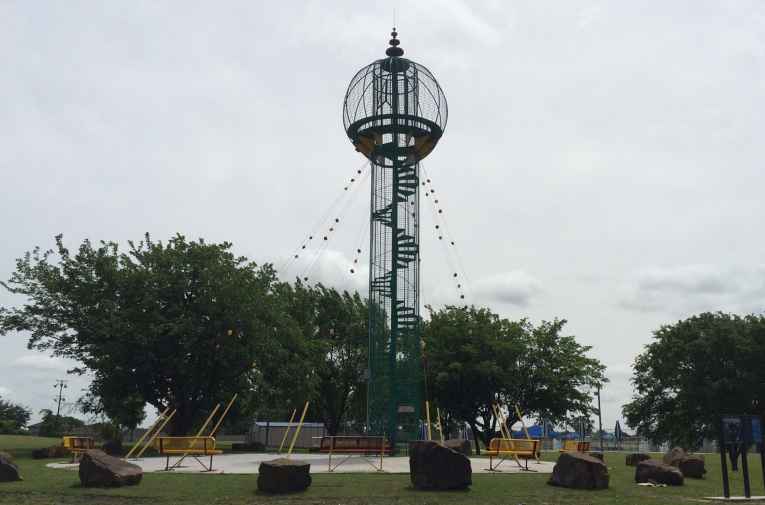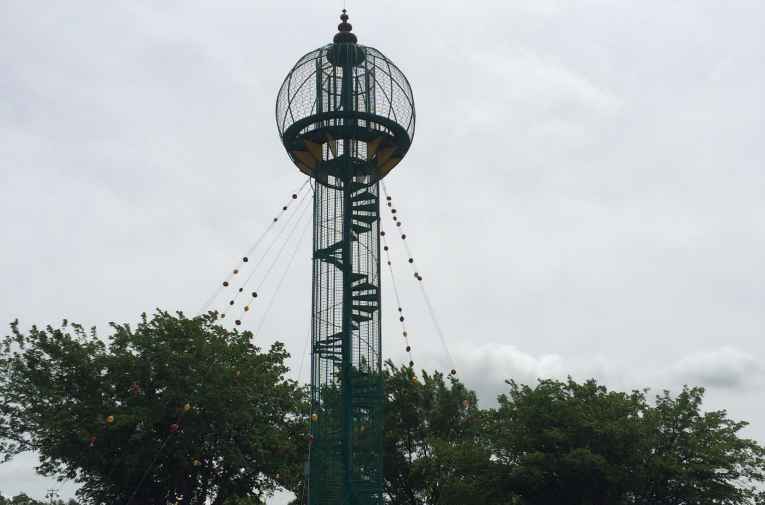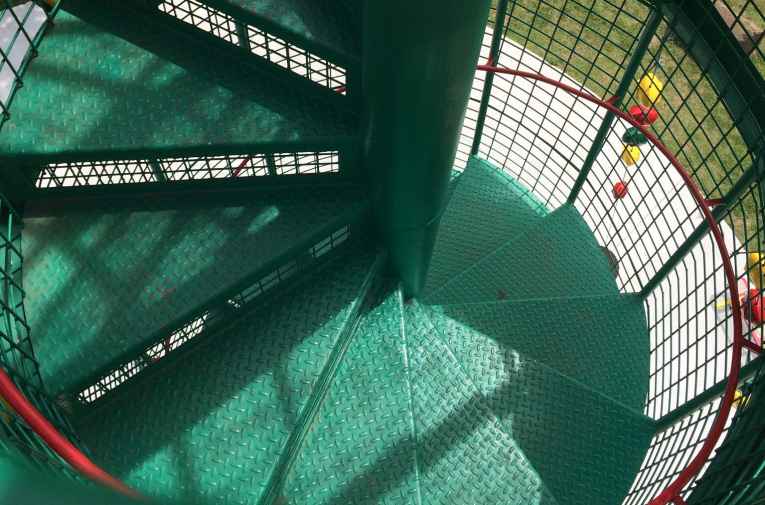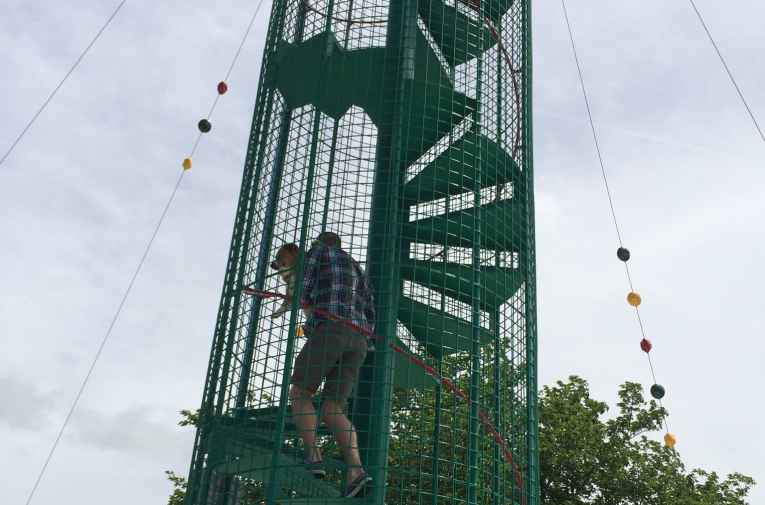Sooner Park Play Tower by Bruce Goff
200 - 400 Madison Blvd.,
Bartlesville, OK 74006

Sooner Park Play Tower by Bruce Goff
200 - 400 Madison Blvd.,
Bartlesville, OK 74006
Get Directions
Architect Bruce Goff was commissioned by Mrs. Harold C. Price (wife of founder of the H.C. Price Company) to design the Sooner Park Play Tower in 1963. The tower was a gift from Mrs. Price to the children of Bartlesville for inclusion in the new Sooner Park that was being developed from land donated to the City by the Price and Adams families. In Goff’s own words “the play-tower-climber consists of a circular spiral steel stairway on which they can jump up and down (to make noise!) and run up and down, safely enclosed in a steel fencing cylinder raising 50’ up to the observation and rest platform in a spherical spatial space commanding views of the park and the town nearby.”
Goff’s design for the Sooner Park Play Tower was based upon mathematic principles: line, sphere, circle, cylinder, spiral and mobius strip. Constructed of steel components (mesh fencing, perforated plate, textured tread plate, and steel rods), the tower was painted in primary colors red, yellow, and green.
The tower was originally placed within a circular concrete barrier (16” high and 16” deep) filled with sand that spanned 50 feet in diameter which served as a sand play pit. Also included within the circular frame was a 6-foot high mobius strip constructed of continuous steel fencing with welded rods and raised on 12 piers, designed as a climbing and crawling feature. In Goff’s own words “the mobius-strip crawler is used by the children to crawl around on, a continuous strip of steel fence with welded rods to stand on or hang from both sides of the strip. This makes use of the famous mathematical principle for twisting a straight strip of material which has two sides or surfaces so that when it is twisted and the ends are fastened, the strip becomes continuous and with only one surface! This is very mysterious to the children and to their parents!” Within the circle, the tower was positioned off-center, and tethered to the ground outside the perimeter of the concrete barrier with 12 cables, each adorned with metal beads in the same color scheme as the tower.
Constructed in 1963 by Scott and Hill, a local structural steel fabrication company, the whole project came in at around $7,000 and took approximately three weeks to construct. The play tower was moved down Frank Phillips Boulevard on Friday morning, February 28, 1964, on its way to Sooner Park, where it was erected. For almost thirty years, the tower was a favorite for children and adults of all ages, and was the setting of many fond memories.
The play tower was closed in the early 1990’s due to deterioration. The entrance at the bottom of the spiral staircase was covered, bolted and locked. The sand play pit and mobius strip had been removed. The primary-colored paint had faded and all but disappeared. The 12 cables that tethered the tower to the ground had been reduced to three in number and the colorful beads which adorned the cables were largely gone.
The year 2014 marked the 50-year anniversary of the Sooner Park Play Tower, and to commemorate this, the City of Bartlesville earmarked funds, which were then increased by generous donations from the community, near and far, for the tower’s restoration. In the Fall of 2014, the tower was restored by Service and Manufacturing Corporation, and opened once again for children and adults of all ages to climb the spiral staircase to the observation deck which provides a spectacular view of the City. One day, perhaps the mobius strip can also be re-created and placed at the bottom of the tower.
This play tower, reminiscent of the space-age era in which it was designed, stands as one of Bruce Goff’s few public works of sculpture and embodies his legacy of architectural expressionism. It is truly “one of a kind” and unique in every sense of the word, from a recreational, artistic or an architectural point of view.





